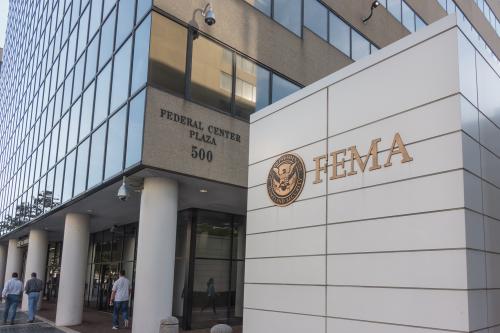The Obama administration’s FY 2012 budget is all about arguing–perhaps somewhat rhetorically given political realities–the role of investments in growth despite the imperative for austerity. Such tradeoffs are everywhere in the budget. And yet, in no domain are those twin stances more sharply visible than in the Energy Department (DOE) outline, which proposes a classic “cut-to-invest” strategy to maintain progress on key imperatives when retrenchment appears likely.
Overall, the new budget request proposes growing the DOE budget (see a detailed press release and Sec. Chu’s presentation and PowerPoint here and here) by a substantial 12 percent over FY 2010 spending levels, and it would importantly continue the Obama administration’s push to bolster the nation’s inadequate research, development, and deployment investments in clean energy.
On this front, R&D accounts would increase by fully one-third (to about $8 billion), driven by a series of robust moves. For example, the outline would increase funding of the DOE’s Office of Science to $5.4 billion, on course to meet the President’s long-term commitment to double the budgets of key research agencies.
It would also double the funding of the Advanced Research Projects Agency-Energy (ARPA-E), which has already begun to produce disruptive innovations, to $550 million. And in addition, the new budget calls for creating three more Energy Innovation Hubs (focused on batteries, smart grid, and critical materials) for fomenting technological collaboration among universities, the private sector, and government labs to solve big challenges in critical areas at a cost of roughly $66 million. These institutes somewhat reflect a concept developed by the Metro Program in a major 2009 paper, and would bring to six the number of the nation’s portfolio of hubs.
Beyond these innovation investments, the administration is looking to increase spending for renewable energy and energy efficiency programs at DOE by nearly $1 billion, or 44 percent, over FY 2010 levels. Likewise, the budget proposes to spend $588 million for advanced vehicle technologies–an increase of 88 percent above current funding levels. This would include an interesting new effort to reward communities that invest in electric vehicles and infrastructure and remove regulatory barriers through a $200 million grant program, modeled after the Education Department’s successful Race to the Top program.
So where will the money come from for these new efforts? It comes from the “cut” part of the “cut-to-invest” playbook, which seeks to finance needed new investments by slashing lower-priority or retrograde current spending. (The budget’s cuts are detailed here). Along these lines, the 2012 budget would raise more than $4 billion a year by slashing the budget of the DOE’s Office of Fossil Energy and cutting billions of dollars’ worth of questionable subsidies of fossil fuels. Some $418 million would come from reducing the fossil fuel office’s budget by 45 percent. Meanwhile, some $3.6 billion would result from phasing out illogical credits and deductions for various oil, gas, and coal activities in accordance with President Obama’s agreement at the G-20 Summit in Pittsburgh to phase out subsidies for fossil fuels so that the country can transition to a 21st century energy economy.
The net effect: By cutting hundreds of millions of dollars of provisions that in effect subsidize dirty energy the nation will be able to discipline the growth of the Energy Department budget while paying for significant new investments to make clean energy cheap.
In that sense, the 2012 DOE budget proposal stands out as an indicator of where energy department budget policy needs to go in the absence of new revenue from a comprehensive carbon pricing system. Without said revenue, whether from a carbon tax or a cap-and-trade system, the costs of essential investments will need to be “internalized” on the energy sector. And that will require reform of DOE and the subsidy system.



Commentary
Op-edAround the Halls: ‘Cut to Invest’ at the Department of Energy
February 16, 2011